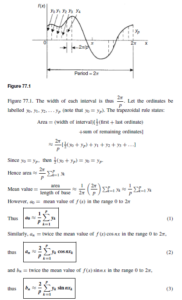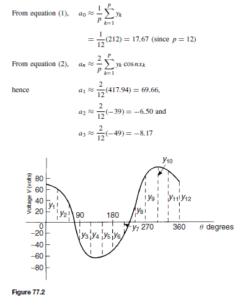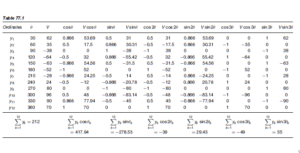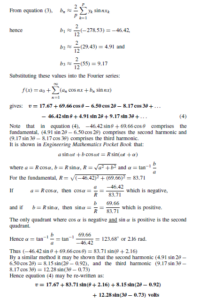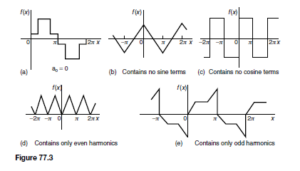Introduction
Many practical waveforms can be represented by simple mathematical expressions, and, by using Fourier series, the magnitude of their harmonic components determined. For waveforms not in this category, analysis may be achieved by numerical methods. Harmonic analysis is the process of resolving a periodic, non-sinusoidal quantity into a series of sinusoidal components of ascending order of frequency.
Harmonic Analysis on data given in Tabular or Graphical Form
A Fourier series is merely a trigonometric series of the form:
However, irregular waveforms are not usually defined by mathematical expressions and thus the Fourier coefficients cannot be determined by using calculus. In these cases, approximate methods, such as the trapezoidal rule, can be used to evaluate the Fourier coefficients.
Most practical waveforms to be analysed are periodic. Let the period of a waveform be 2n and be divided into p equal parts as shown in
For example, the values of the voltage v volts at different moments in a cycle are given by:
from the given table of values. If a larger number of intervals are used, results having a greater accuracy are achieved. The data is tabulated in the proforma shown in Table 77.1.
which is the form used in chapter 76 with complex waveforms.
Complex Waveform Considerations
It is sometimes possible to predict the harmonic content of a waveform on inspection of particular waveform characteristics; the result of this is reduced calculation.
(i) If a periodic waveform is such that the area above the horizontal axis is equal to the area below then the mean value is zero. Hence a0 = 0 (see Figure 77.3(a)).
(ii) An even function is symmetrical about the vertical axis and contains no sine terms (see Figure 77.3(b)).
(iii) An odd function is symmetrical about the origin and contains no cosine terms (see Figure 77.3(c)).
(iv) f(x) = f(x + n) represents a waveform which repeats after half a cycle and only even harmonics are present (see Figure 77.3(d)).
(v) f(x) = -f(x + n) represents a waveform for which the positive and negative cycles are identical in shape and only odd harmonics are present (see Figure 77.3(e)).



